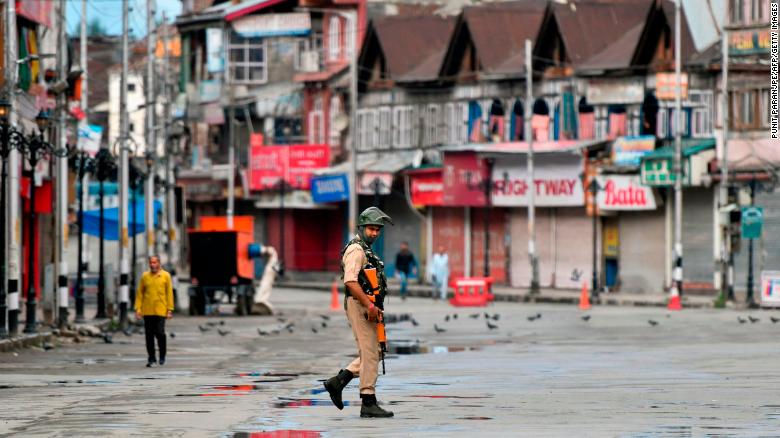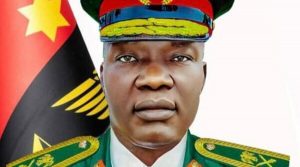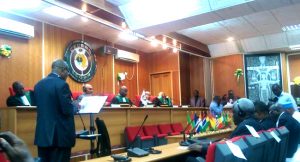Under the curtain: Kashmir residents contend with pellet guns and restrictions

Anticipating public backlash to the move on August 5, India deployed tens of thousands of additional troops and swept a dark, virtual curtain across its portion of the disputed Kashmir region it controls with a communications blackout, travel curfews, and roadblocks. The government has repeatedly assured the world that life there is getting back to normal and any unrest has been minor. But scraps of information trickling out of the region tell a different story. Officials in Srinagar, the capital of Indian-controlled Kashmir, tell of mass detentions and residents say tear gas and pellet guns are being used against Kashmiri citizens and restrictions on movement are still in place. Two local officials told CNN that more than 2,000 people were detained in Jammu and Kashmir in the days leading to, and after, the August 5 decision, including political leaders, elected representatives, lawyers, activists, businessmen and students.Most were held under a controversial Jammu and Kashmir Public Safety Act (PSA) legislation, which allows authorities to book a person without charge or trial for up to two years. It is not clear how many of the 2,000 are still detained.”The government wants us to believe everything is normal. But we still find out about protests, tear gas, injuries despite the continued communication blockade,” said shopkeeper, Mushtaq Ahmad, 35, who lives in uptown Srinagar. “Everything is still shut in the city and around us, and the movement is almost impossible when the restrictions are in place.”Article 370 of India’s constitution gave Jammu and Kashmir the power to have its own constitution, flag and autonomy over all matters, save for certain policy areas such as a foreign affairs and defense.The Indian government said the move to revoke the state’s special status was to ensure the nation’s laws are equal for all citizens. Prime Minister Narendra Modi’s Hindu nationalist Bharatiya Janata Party (BJP) has repeatedly insisted that the provisions restricted investment and economic growth.And the government has said the communications blackout and restrictions on movement in Jammu and Kashmir in the run up to, and after, the announcement were put in place for security reasons. On August 12, the state government said in a statement that demonstrations against the removal of Article 370 were “minor localized protests of a routine nature in a few places.”Since then, CNN has repeatedly reached out to the Jammu and Kashmir administration and the country’s home ministry about the restrictions, protests and number and nature of injuries, but haven’t received a response. Thousands detained, pellet gun injuriesOn August 10, Farooq Ahmad Qureshi walked out of his home in Srinagar to buy some bread from his local bakery. Instead, he says he found himself in the middle of a demonstration.”I started moving towards the baker’s shop,” said the 35-year-old resident of the Karfalli Mohalla area of the old city. “I heard a sound and next blood started oozing from my left eye. I fell down and started crying in pain.”The doctor told him he had been hit in the eye by pellets. “The doctors who treated me said I have little chance of regaining (my) sight as three pellets had seriously damaged my eye,” he said. Human rights groups and local media have reported that Indian troops are firing pellet guns at protesters.Senior police officer Munir Khan addressed the protests and violence in a press briefing on August 14, saying, “There have been no major injuries to anybody. There have been a few pellet injuries, who were treated and sent back.”A doctor in the ophthalmology ward in the main hospital of Srinagar told CNN he has treated dozens of patients who have sustained eye injuries caused by pellet guns. “We have so far treated 30 victims in the ophthalmology unit of SMSH (Shri Maharaja Hari Singh) hospital from August 5,” the doctor told CNN. He spoke on the condition of anonymity because he was not authorized to speak to media. Pellet guns are commonly used by Indian security forces to disperse crowds in Kashmir, and protests have erupted when the local administration has lifted restrictions on movement. But details on the size and frequency of these protests — as well as number of potential casualties — are only anecdotal.Other residents say security forces are firing tear gas on an almost-daily basis.”The local youth engage in stone pelting in the evening when the Indian security forces start to withdraw for the day. The security forces respond by firing tear gas,” Ayub, 33, who only goes by one name, said from the Saraf Kadal locality in downtown Srinagar. “For the past 20 days or so, this has become almost a daily routine in my neighborhood, which sometimes results in injuries to the protesters. How is this normal?” A bid for economic growth ]]]]>]]>Kashmir is one of the world’s most dangerous flashpoints. Claimed in its entirety by both India and Pakistan, it has been the epicenter for more than 70 years of an often violent territorial struggle between the nuclear-armed neighbors. In 1947, after India’s independence from British colonial rule, the former ruler of Jammu and Kashmir was given an option to accede to either Pakistan or India and, in exchange for protection, chose the latter. But special provisions were added to the Indian constitution, under Article 370, to protect the rights of the territory’s residents.Revoking Kashmir’s special status was one of the promises made by Modi ahead of recent national elections, saying the move would free the area of “terrorism.” Article 370, he said, had caused “separatism, terrorism, dynastic politics and corruption.”Under the new system, non-residents will be allowed to purchase property in Jammu and Kashmir, and apply for jobs or scholarships that had previously been reserved for residents. Experts said it could open the way for a steady demographic change in India’s only Muslim-majority state.That has caused widespread anxiety among the Muslim population in the Kashmir valley.Pakistan’s Prime Minister Imran Khan, meanwhile, has likened India’s revoking of Jammu and Kashmir state’s broad autonomy to Nazi ideology, and said his country is prepared to “fight to the end” over Kashmir, which the country claims for its own. The two countries have fought three wars since 1947, two of them over Kashmir.Pakistan has been pushing for international intervention over Kashmir, but a UN Security Council meeting on the issue — the first in almost 50 years — failed to agree on a statement, with some diplomats fearing any comment would escalate tensions or would show bias towards Pakistan by simply holding the meeting.Life under lockdownThe local government has said its actions in Kashmir, on communications and freedom of movement in the region, is necessary for public order and peace. “Restrictions on connectivity continue as a result of security requirements,” the state government said in a statement on August 12.Officials have repeatedly said the restrictions will be lifted in phases but have not provided a definitive timeline, leaving the entire region in confusion. The Jammu and Kashmir government said restrictions in parts of the state have already been completely lifted. Currently, only some landline telephone services have been restored in the Kashmir valley, and there is still no mobile or internet connectivity. Furthermore, in the city of Srinagar, there is a heavy presence of paramilitary soldiers, with checkpoints every 200 meters.The local government said it has set up “help lines” at the district commissioner’s office, police stations and police posts so people can contact their families.”I have been going from pillar to post for the past 15 days to get in touch with my parents. But with no luck,” said Najam Rous, 26, whose parents had traveled to Saudi Arabia for the Muslim pilgrimage Hajj. Eventually she managed to contact her family from her neighbour’s landline phone. “My parents were crying and the first thing they asked me was if we had food at home,” she said. In some places, restrictions prohibit gatherings of more than three people remain in place, police demand identification and a vehicle check at each checkpoint, and fears of violence are keeping residents inside their homes after sunset.In downtown Srinagar, which is considered more volatile as it’s a poorer, more densely populated part of the city, coils of wire remain at every corner to restrict the movement of vehiclesNavnita Chadha Behera, head of political science at Delhi University State, said often restrictions are lifted, then put back in place just as quickly. “(The government is) just sort of testing waters. And there are bound to be protests,” said Behera.”To expect that just because you have put the valley under lockdown for X number of days and when you reopen it, people will accept what has happened, it is an unrealistic expectation,” added Behera, who is the author of several books on South Asia including “Identity and Violence: Jammu, Kashmir, and Ladakh.”For example, after schools were shut for two weeks, some reopened in Srinagar on Monday. One school in uptown Srinagar, however, remained empty and teachers declined to comment to CNN. A couple of hours after opening, the school was shut again and the teachers had left.The government said middle schools opened last Wednesday. Delays and shortagesIn parts of Srinagar, shops are boarded up and the streets deserted due to the continued presence of Indian paramilitary soldiers. Roadblocks have also made it tougher for the sick to reach hospitals, locals tell CNN. In the city’s SMSH hospital, Mushtaq Ahmad said he traveled for eight hours through the night from his home in North Kashmir’s Kupwara district so his 8-year-old son, Khurshid Ahmad, could receive eye surgery. The 120-kilometer journey would usually only take two hours, he said, and it cost him a Rs 4,000 ($56) taxi ride. “Normally we pay Rs 200 ($2.8) to reach the capital city. We are poor people. People in my area are as agitated as elsewhere in the valley against the scrapping of Article 370,” he said.Rafiq Ahmad, 32, said he had to rush his nephew Rahat Iman, 5, to the hospital because of a throat infection and high fever. Driving from his home in South Kashmir’s Shopian town 85 kilometers away, Ahmad said, “Everything is closed en route. And there are roadblocks on the highway to Srinagar.”Residents say they venture out only late afternoon or early mornings, but they are able to get essential supplies such as bread, vegetables, and rice, from their small neighbourhood stores. “Whatever we need, we are still getting it,” Irshad Ahmad, a resident in uptown Srinagar said.Shauqat Ahmad, owner of grocery store on the outskirts of the city said a lot of businesses were relying on their stock from the Muslim festival Eid al-Adha, which many residents were unable to celebrate because of the crackdown. “We had enough stocks of essential items for Eid. But since people could not purchase them at the time, we are hoping they will last for some more time,” Ahmad said.But other products have begun to run out. “We have a shortage of 80% drugs in our shop. No new supplies are coming because of the continuous shutdowns and restrictions,” said Raees Ahmad, owner of Friends Medicate pharmacy in Srinagar. “We cannot transfer money to the suppliers outside the state to get supplies. We are telling our customers to try and get medicines from other medical stores in the vicinity.”The state government said in its official Twiiter page that essential drugs are available at government shops and private retailers, and most chemist shops remain open in Srinagar and 65% across the Kashmir valley.Meenakshi Ganguly, South Asia director of Human Rights Watch, has called on the Indian government to ensure the rights of people living in Kashmir are respected. “The disruption of internet and telecommunications and the restrictions on movement in Jammu and Kashmir placed vulnerable populations at risk, including in accessing crucial medical services. Under international law, India has the obligation to ensure that any such restrictions are necessary and proportionate, and not used as a tool of censorship under the guise of security,” she said. CNN’s Richard Roth contributed.







